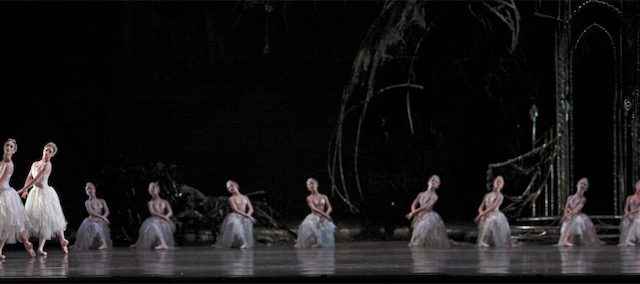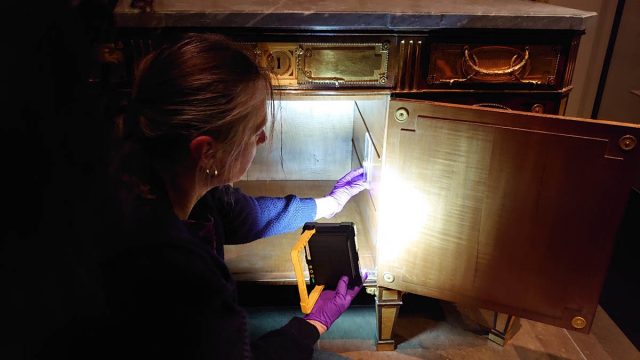I am text block. Click edit button to change this text. Lorem ipsum dolor sit amet, consectetur adipiscing elit. Ut elit tellus, luctus nec ullamcorper mattis, pulvinar dapibus leo.



Nicola Costaras, Head Paintings ConservatornnEoin Kelly, Paper ConservatornnMarie de Lauzon, Paintings Conservatornn nnu2018Decorative art has become truly democratic, and the problem of the hour is how to bring within the reach of the everyday people the decorative effects of the most costly materials.u2019 1nnThese lines formed part of the introduction to an article in The Decorator and Furnisher, published in June 1890, about the invention and advantages of Tynecastle Tapestry and celebrated the opening of an office and saleroom of the Tynecastle Canvas Co. of Edinburgh at No. 74 West 23rd Street in New York City. The editor went on to describe how the modern decorator was now able to imitate a variety of antique wallcoverings from u2018the most precious tissues of China and Japanu2019 to the u2018illuminated leather of Spain and Hungaryu2019 by using wallpaper, papier mu00e2chu00e9, lincrusta, anaglypta, lignomur, cheap silks, cretonnes and now Tynecastle Tapestry.2 A great many designs are described so it is an extraordinary coincidence that the example of Tynecastle Tapestry in the Victoria and Albert Museumu2019s collection should be one of the two patterns illustrated in the article (Figure 1), with curling grapevines, pomegranates and a well-camouflaged bird in the foliage. The pattern was embossed into the canvas in high relief and backed with a papier mu00e2chu00e9 layer made from red paper pulp. The front of the canvas was coated with a cream-coloured oil priming. It could be bought like this u2018ready for any style of decoration the decorator can deviseu2019 or, if desired, the Tynecastle Canvas Co. could supply sections complete with painting and gilding. It was pointed out that this was a great saving in time and labour particularly suited to those situations with considerable time pressure such as the fitting out of steamships.3nn nnIt is not known where the scheme in the V&A collection was originally hung. The chosen finish, in imitation of gilded leather, was achieved through a warm yellow shellac varnish applied over silver leaf. Dark brown glazes were added to further emphasise the relief pattern (Figure 2). The three pieces chosen for the Ocean Liners: Speed and Style exhibition (W.24:1-3-2016) must have been in an arched alcove while the two now hanging in the Scottish Design Galleries at V&A Dundee are rectangular (W.24:4-5-2016). The sections, which arrived rolled, measure 610mm wide with a maximum height of 2380mm. There were indications that it had been necessary to remove the sections of canvas from the wall quickly, fragments of plaster were stuck to the reverse and in places much of the red paper layer was missing or torn (Figure 3).nn nn nnTheir condition varied a little but all the sections of u2018tapestryu2019 needed similar treatment. Before working on the reverse, Lucia Burgio in the Science Section analysed the fibrous red paper to ensure it was not going to pose a health risk. XRF analysis showed that the pulp is pink due to the inclusion of red iron oxide. The cream priming was found to consist mainly of lead white and chalk, with the inclusion of some barium sulphate, and the metal leaf was identified as silver. Tears were repaired using polyamide welding powder, flaking silver leaf was fixed using Lascaux Mu00a0edium for Cu00a0onsolidation, and the torn paper was reattached using wheatstarch paste. Surface dust was removed using latex smoke sponges. Local distortions, and the curl from their previous rolled state, were treated by humidifying the canvas-paper laminate with damp blotting paper through Gore-Tex and letting it dry flat under dry blotter and weight. Distracting losses in the glaze layers were retouched with Gamblin Conservation colours (pigments bound in Laropal A81).nnHaving prepared the first three sections for the Ocean Liners exhibition, the method to be used for mounting them needed to be determined. This decision was undertaken in collaboration with our colleagues in Paper Conservation. As the exhibition would be travelling to several venues, it would be an advantage to have light-weight supports that would be straightforward to pack and install. It was agreed that the system generally used for mounting wallpaper would be suitable. Eoin Kelly led on this, attaching Japanese paper strips to all the edges with wheatstarch paste. Susan Catcher, Senior Paper Conservator, showed us how to dye the paper with Yasha, a traditional dye produced from alder tree cones, to provide a neutral background. The arched shape to the top of the u2018tapestryu2019 panels meant that the paper would be visible over a considerable area and the colour was therefore important. Once dry the paper edges were used to attach the canvas sections to Tycore and Dibond composite panels. These secondary supports were assembled in advance complete with aluminium split battens ready for installation (Figure 4). While the system worked well for the sections intended for the Ocean Liners exhibition, we felt that traditional stretchers would be a better option for the two panels going on permanent display in the Scottish Design Galleries at V&A Dundee as they would have the advantage of allowing the canvases to be tensioned after mounting if necessary.nnPolyester sailcloth and Beva film (Lascaux heat seal adhesive) were chosen to carry out the strip-lining. The high relief in the canvas-paper laminate and consequent hollows on the reverse presented a challenge to adhering the polyester sailcloth, so an initial Japanese paper strip with wheatstarch paste, which could be moulded to the irregular surface while damp, was applied. After this was dry the polyester sailcloth strip-lining was ironed over it. The canvases were then attached to their new stretchers. The paper had a fortuitous additional function; by staining it with a thin wash of acrylic paint to match a half tone in the faux gilt leather, it was used to conceal the bright white sailcloth strip-lining. Beva film was used to secure the paper to the excess sailcloth on the reverse.nnWhere better to treat a painted, gilded, and varnished canvas-paper laminate than in the adjacent Paper and Paintings Conservation studios at the V&A? By exchanging and adapting ideas and materials we combined traditional and innovative treatments. This example of Tynecastle Tapestry is now a rare survival. It is only through contemporary accounts that we can appreciate that a hundred years ago it was a common sight in decorative interiors. The popularity of Tynecastle Tapestry in the decoration of ocean liners is underlined in the 1890 article. It describes how the canvas was used extensively, in u2018saloons, staterooms, passages, and stairwaysu2019, in six of the ships of the P&O Co.; and that u2018the two latest additions to the White Star fleet, the u201cTeutonicu201d and the u201cMajesticu201d, have been decorated with the canvas on a magnificent scaleu2019.4nnAcknowledgementsnnWe would like to thank the many colleagues who assisted us with this highly collaborative project and particularly Matthew Rose in Technical Services for the supporting panels.nnReferencesn
- n t
- The Decorator and Furnisher, Vol 16, No. 3 (June 1890), p.83 n t
- Ibid, p.83 n t
- Ibid, p.84 n t
- Ibid, p.84 n



I have a four-fold screen with the pomegranate and grapevine pattern, each panel 182cm by 60cm. Glorious golden with green contrast and maroon background. Every day looking at it gives me pleasure.
Very interesting to find your article. We identified several surviving Tynecastle Tapestry designs (Frieze, borders, dado and ceiling tiles) at Langdale Chase Hotel, Windermere when Frank restored and refinished them in 2023 as part of a major hotel refurb. (They initially thought they were Lincrusta). Frank saved a few remnants from being thrown out.